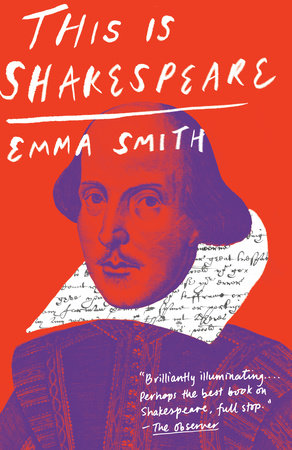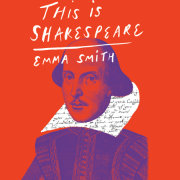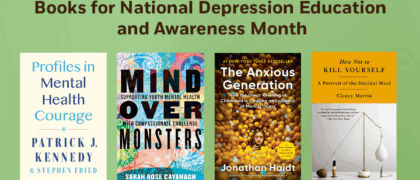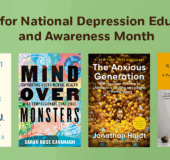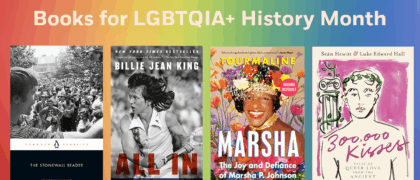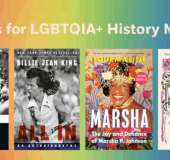INTRODUCTION Why should you read a book about Shakespeare?
Because he is a literary genius and prophet whose works speak to—more, they encapsulate—the human condition. Because he presents timeless values of tolerance and humanity. Because his writing is technically brilliant and endlessly verbally inventive. Because he put it all so much better than anyone else.
Nope.
That’s not why; not at all. Sure, that’s what we always say about Shakespeare, but it doesn’t really get to the truth about the value of these works for the twenty-first century. The Shakespeare in this book is more questioning and ambiguous, more specific to the historical circumstances of his own time, more unexpectedly relevant to ours. Lots of what we trot out about Shakespeare and iambic pentameter and the divine right of kings and ‘Merrie England’ and his enormous vocabulary blah blah blah is just not true, and just not important. They are the critical equivalent of ‘dead-catting’ in a meeting or negotiation (placing a dead cat on the table to divert attention from more tricky or substantive issues). They deflect us from investigating the artistic and ideological implications of Shakespeare’s silences, inconsistencies and, above all, the sheer and permissive gappiness of his drama.
That gappy quality is so crucial to my approach that I want to outline it here. Shakespeare’s plays are incomplete, woven of what’s said and what’s unsaid, with holes in between. This is true at the most mundane level: what do Hamlet, or Viola, or Brutus look like? A novelist would probably tell us; Shakespeare the dramatist does not. That means that the clues to personality that we might expect from a novel, or from a fi lm, are not there. If
The Taming of the Shrew’s Katherine looks vulnerable, or ballsy, or beautiful, that makes a difference to our interpretation of this most ambiguous of plays, and if her imposed husband Petruchio is attractive, or boorish, or nervous, that too has an impact. Fantasy casting—where you imagine a particular modern actor in a role—is a very interesting game to play with Shakespeare’s plays: if you cast action-guy Mel Gibson as Hamlet (as Franco Zeffirelli did in 1990), you immediately produce a particular take on the play, which is quite different from casting Michelle Terry (at Shakespeare’s Globe in London in 2018), or Benedict Cumberbatch (directed by Lyndsey Turner, 2015). That we don’t know what characters look like is one symptom of the absence of larger narration and commentary in a play. No authorial or narrative voice tells us more than the speeches of the characters themselves. Stage directions are relatively sparse and almost never tell us how a given action was performed: does Richard II give over his crown, orb and sceptre in Act 4 of his play to Bolingbroke sadly, gleefully, manically, or in fact not at all? The play’s choreography is not spelled out for us, leaving this scene typically open to directorial and readerly imaginations. Shakespeare’s construction of his plays tends to imply rather than state; he often shows, rather than tells; most characters and encounters are susceptible to multiple interpretations. It’s because we have to fill in the gaps that Shakespeare is so vital.
And there are larger conceptual and ethical gaps too: the intellectual climate of the late sixteenth century made some things newly thinkable (that religion is ‘but a childish toy’, as Shakespeare’s contemporary Christopher Marlowe had one of his characters claim), and overlaid old certainties with new doubts. Shakespeare lived and wrote in a world that was on the move, and in which new technologies transformed perceptions of that world. The microscope, for example, made a new tiny world visible, as Robert Hooke uncovered in his book
Micrographia (1665), illustrated with hugely detailed pictures including fleas as big as cats. The telescope, in the work of Galileo and other astronomers, brought the ineffably distant into the span of human comprehension, and theatre tried to process the cultural implications of these changes. Sometimes, Shakespeare’s plays register the gap between older visions of a world run by divine fiat, and more contemporary ideas about the centrality of human agency to causality, or they propose adjacent worldviews that are fundamentally incompatible. These gaps are conceptual or ethical, and they open up space to think differently about the world and experience it from another point of view.
Gappiness is Shakespeare’s dominant and defining characteristic. And ambiguity is the oxygen of these works, making them alive in unpredictable and changing ways. It’s we, and our varied engagement, that make Shakespeare: it’s not for nothing that the first collected edition of his plays in the seventeenth century addressed itself ‘to the great variety of readers’.
His works hold our attention because they are fundamentally incomplete and unstable: they need us, in all our idiosyncratic diversity and with the perspective of our post-Shakespearean world, to make sense. ‘Shakespeare’ is here less an inert noun than an active verb: ‘to Shakespeare’ might be defined as the activity of posing questions, unsettling certainties, challenging orthodoxies, opening out endings. I wanted to write a book about Shakespeare for grown-ups who don’t want textbook or schoolroom platitudes. Not a biography (there’s nothing more to say about the facts of Shakespeare’s own life, and vitality is a property of the works, not their long-dead author); not an exam crib (Shakespeare’s works ask, rather than answer, questions, making them wonderfully unsuited to the exam system); not a Shakespeare-made-simple (Shakespeare is complex, like living, not technically and crackably difficult, like crosswords or changing the time on the cooker): I wanted to write something for readers, theatregoers, students and all those who feel they missed out on Shakespeare at some earlier point and are willing to have another pop at these extraordinary works.
We all know Shakespeare occupies a paradoxical place in contemporary culture. On the one hand his work is revered: quoted, performed, graded, subsidized, parodied. Shakespeare! On the other hand—cue yawns and eye rolls, or fear of personal intellectual failure—Shakespeare can be an obligation, a set text, inducing a terrible and particular weariness that can strike us sitting in the theatre at around 9.30 p.m., when we are becalmed in Act 4 and there’s still an hour to go (admit it—we’ve all been there). Shakespeare is a cultural gatekeeper, politely honoured rather than robustly challenged. Does anyone actually like reading this stuff?
Yes: and I hope this book will give some indications how. It is not an attempt to cut Shakespeare down to size, but I do hope that it might open out to you a less dogmatic, less complete, more enjoyable Shakespeare. This is a Shakespeare you could have a drink and a good conversation with, rather than one you have to bow before. I don’t have a grand theory of Shakespeare to inculcate, still less do I think I have access to what Shakespeare meant. (Confession: I don’t really care what he might have meant, and nor should you.) I want to explore the ways in which Shakespeare’s plays are spacious texts to think with—about agency, celebrity, economics, friendship, sex, politics, privacy, laughter, suffering, about a tonne of topics, including art itself. Each chapter in the book, on a specific play, takes a different approach. I’ve picked plays I like and find stimulating. Some of these are famous, so you’d be annoyed to buy a book on Shakespeare that didn’t mention them; some are more marginal, but I wanted to say something about how interesting they are (
The Comedy of Errors, anyone?). I’ve tried to give a sense of Shakespeare’s range across his career, and the plays are discussed in chronological order so that you can see how his writing moves across genres and concerns. But I’ve also tried to keep the individual chapters self-contained, so that you could read one before going to the theatre, for example, or start at the end if that’s where your interest lies.
Together, the chapters cover aspects of performance, contemporary and original. They sometimes think about historical context and sometimes ignore it completely. They look sometimes at Shakespeare’s sources or the influences from his culture, and sometimes at the reception his works have generated in later worlds including our own. They present a Shakespeare who is an Elizabethan and Jacobean writer concerned both with classical literature and the problems of political succession, as well as with more modern themes of identity and scepticism. This Shakespeare knows about intersectionality as much as about Ovid. He is fluent in our contemporary concerns, but he is not simply a mirror for our own solipsistic age. Above all, these plays prompt questions rather than answers. This is what gives them their edge and provocation; this is what forever implicates us in their meanings; and this is why they need your attention. I’ve called the book
This Is Shakespeare not to convey a monolith—quite the opposite. Shakespeare takes shape through our interpretations. It’s here, in our engagement with the works, that they take flight. This—reading, thinking, questioning, interpreting, animating—this really is Shakespeare.
Copyright © 2020 by Emma Smith. All rights reserved. No part of this excerpt may be reproduced or reprinted without permission in writing from the publisher.

